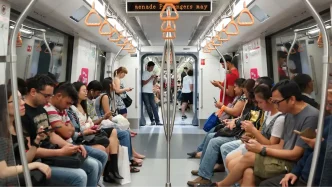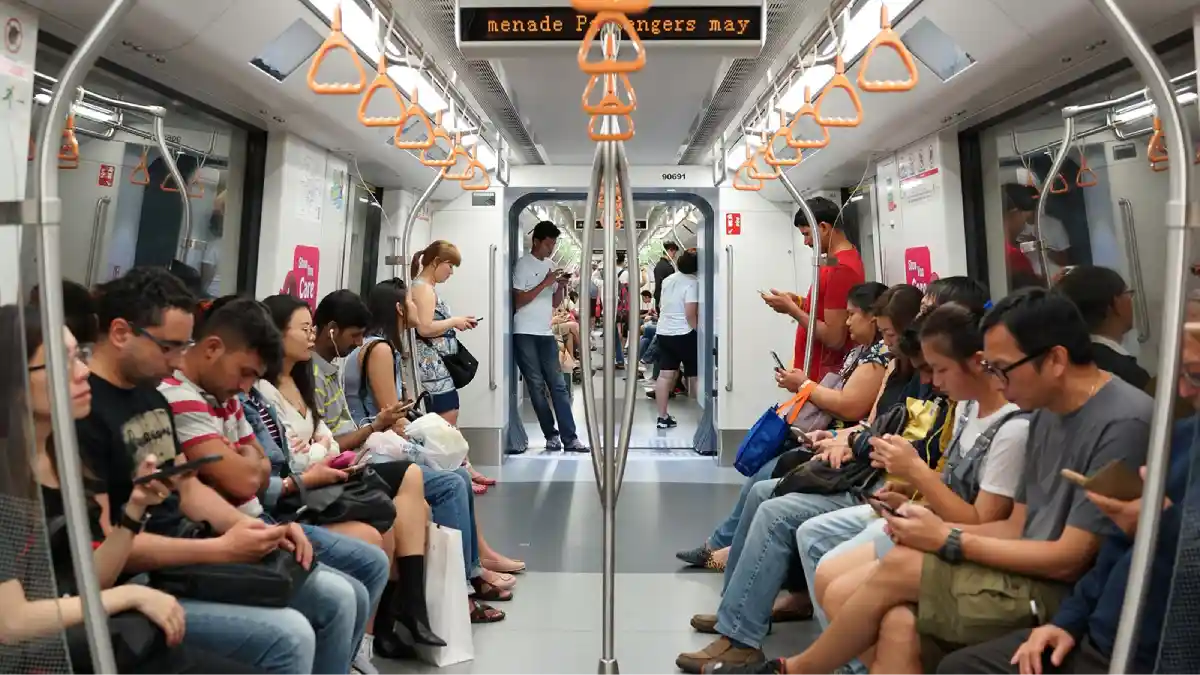A major power fault brought Singapore’s North East Line (NEL) and parts of the Sengkang-Punggol Light Rail Transit (LRT) to a standstill for several hours on Tuesday, August 12, disrupting travel for thousands of commuters. SBS Transit Group CEO Jeffrey Sim issued a public apology, as authorities and operators scramble to address a string of recent train service failures that have frustrated the city-state’s usually reliable public transport system.
Three-Hour Disruption Halts Key Transit Lines
Commuters faced significant inconvenience when a power fault struck at around 11:00 a.m., halting train services across 11 stations on the NEL, from Farrer Park to Punggol. The issue, later traced to a flashover in a voltage transporter at a depot substation, also impacted the Sengkang-Punggol LRT, a vital feeder network for residents in Singapore’s northeastern suburbs. While services on the NEL resumed by 2:10 p.m., and the Sengkang LRT followed at 3:35 p.m., full operations on the Punggol LRT were delayed until 9:20 p.m., with trains limited to a single track during the evening peak hours.
The disruption left passengers stranded, with reports of inadequate communication exacerbating the chaos. Security personnel at some stations prevented entry, and signage indicated no service between Boon Keng and Punggol Coast. Free bridging bus services were deployed, but access was limited, leaving many commuters unable to board due to capacity constraints. The incident painted a stark contrast to Singapore’s reputation for efficiency, raising questions about the resilience of its public transport infrastructure.
CEO Apology and Official Response
In a statement on social media around 3:00 p.m., SBS Transit Group CEO Jeffrey Sim expressed regret for the inconvenience caused to commuters. “We take this matter very seriously and are looking into the cause of the incident” he wrote. Later that evening, in a press release, Sim elaborated that both the main and backup power supplies at a depot substation had tripped, triggering the widespread outage.
Acting Transport Minister Jeffrey Siow also weighed in, acknowledging public frustration over the incident, which follows a series of recent disruptions. Just a week earlier, on August 6, the East-West Line experienced a five-hour delay during morning peak hours. Additionally, the Bukit Panjang LRT faced two separate suspensions last month due to power faults. “This series of recent incidents is disappointing for all of us, and we can and will do better” Siow stated on 6 August.
While Siow noted that the causes of these disruptions were unrelated and occurred on different lines, he admitted that delays are inevitable in any transit system. last week, on 6 August Siow stated “I understand commuters’ frustration whenever there is a delay or disruption in train service, because it messes up your day and throws off your plans”. However, he emphasized the need for improvement in how information is communicated during such incidents and in guiding commuters to alternative routes both onsite and online.
A String of Disruptions: Systemic Issues or Isolated Failures?
Singapore’s Mass Rapid Transit (MRT) system, often lauded as a benchmark for urban transport globally, has faced increasing scrutiny over the past few months. The NEL disruption is the latest in a series of incidents that have tested public patience. The East-West Line breakdown on August 6 stranded thousands during the critical morning rush, while repeated power faults on the Bukit Panjang LRT have disrupted connectivity for residents in the northwestern part of the island.
These incidents highlight the challenges of maintaining an aging transit network under constant demand. The NEL, which opened in 2003, serves as a critical artery connecting central Singapore to the northeastern regions, while the Sengkang-Punggol LRT supports densely populated housing estates. With ridership numbers consistently high—pre-pandemic figures from the Land Transport Authority (LTA) reported over 500,000 daily trips on the NEL alone—any disruption has a cascading effect on commuters’ schedules and the broader economy.
Transport analysts suggest that while power faults and technical glitches are not uncommon in complex systems, the frequency of recent incidents raises concerns about maintenance protocols and infrastructure upgrades. The city-state has invested heavily in expanding its MRT network, with projects like the Thomson-East Coast Line and Cross Island Line underway, but maintaining existing lines remains equally critical. The LTA has pledged to work with operators like SBS Transit to conduct regular exercises aimed at improving response mechanisms during service disruptions, though public trust may take time to rebuild.
Commuter Frustration and Communication Gaps
Beyond the immediate inconvenience of delayed or halted services, a recurring theme in commuter feedback is the lack of timely and clear communication. During Tuesday’s disruption, passengers at affected stations reported minimal announcements and limited assistance from staff. Security measures, such as barring entry to stations, added to the confusion, with some commuters left waiting at platforms without updates.
Bridging bus services, intended as a stopgap, also fell short for many. Capacity constraints meant that only a fraction of stranded passengers could board, leaving others to seek alternative transport options at their own expense. This mirrors broader concerns about crisis management during transit disruptions, a point Acting Minister Siow addressed directly. “What can improve is how we get information to commuters during a delay, and guide commuters to find alternative routes to their destinations” he noted, highlighting the discrepancy between general announcements and the specific impact on individual travel plans.
For a city that prides itself on precision and order, these communication failures strike at the heart of public confidence in the system. Singapore’s workforce, heavily reliant on public transport for daily commutes, faces not just logistical challenges but also economic repercussions from lost time and productivity. Small business owners, delivery workers, and service industry employees—many of whom operate on tight schedules—are disproportionately affected by such disruptions.
Economic Implications of Transit Reliability
Public transport reliability is more than a matter of convenience in Singapore; it is a cornerstone of economic competitiveness. The city-state’s role as a global financial hub and logistics center depends on seamless mobility for its workforce and goods. Disruptions like Tuesday’s NEL outage ripple through the economy, affecting everything from employee punctuality to supply chain schedules.
Economists point out that while a single incident may have a limited impact, recurring disruptions could deter investment and talent retention in the long term. Singapore’s government has long marketed the nation as a model of efficiency, with public transport forming a key pillar of that narrative. The recent spate of failures risks undermining this image, particularly as the city competes with regional hubs like Hong Kong and Tokyo for business and tourism.
Moreover, the cost of addressing these disruptions—both in terms of emergency response and long-term infrastructure upgrades—places additional strain on public finances. SBS Transit and the LTA face the dual challenge of restoring service reliability while managing public expectations for transparency and accountability. The government’s commitment to regular drills and improved communication protocols is a step in the right direction, but tangible results will be the true measure of success.
Looking Ahead: Can Reliability Be Restored?
As Singapore grapples with the fallout from yet another transit disruption, the focus shifts to prevention and preparedness. The LTA’s collaboration with operators to simulate and address service interruption scenarios signals an intent to prioritize commuter experience, but the road to restoring full confidence is long. For now, commuters are left hoping that apologies and promises translate into fewer delays and better support when the inevitable hiccups occur.
With the NEL and Sengkang-Punggol LRT back in full operation, the immediate crisis has passed. Yet, as Acting Minister Siow candidly admitted, delays cannot be entirely eliminated. The question remains whether Singapore’s public transport system can reclaim its reputation as a global gold standard, or if these recurring incidents mark the beginning of a more challenging chapter for urban mobility in the Lion City.













